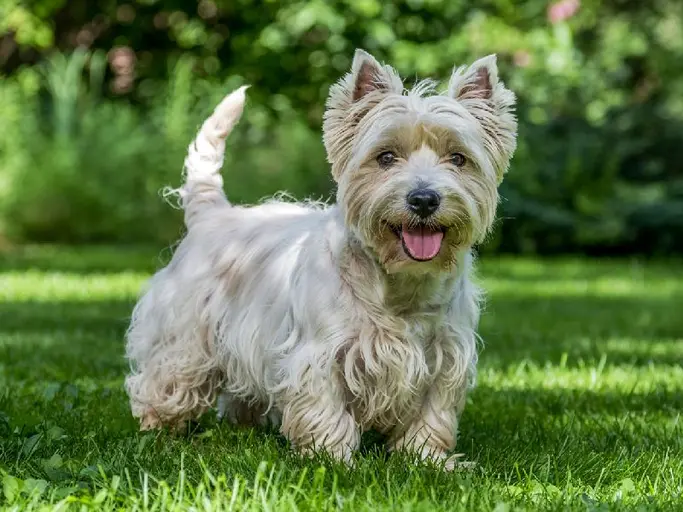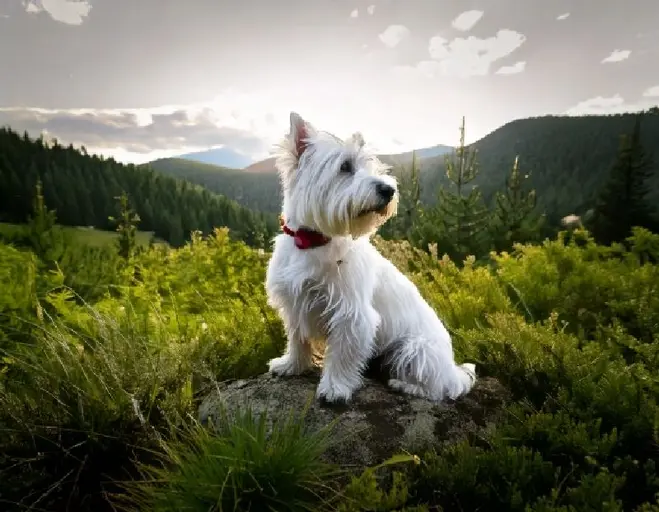The West Highland White Terrier: A Comprehensive Guide

Brief Introduction
The West Highland White Terrier, affectionately known as the “Westie,” is a small, sturdy, and undeniably charming breed. Instantly recognizable by its bright white coat and playful demeanor, the Westie has captured the hearts of dog lovers around the world. But more than just a pretty face, this breed is intelligent, independent, and full of personality. Their compact size makes them adaptable to various living situations, while their spirited nature keeps life interesting. They are energetic companions who love playtime, but also enjoy cuddling on the couch with their families. These dogs are an excellent choice for those seeking a devoted and engaging pet.
Breed History
Origins and Purpose
The West Highland White Terrier hails from Scotland, specifically the Argyll region in the western Highlands. Their history is intertwined with that of other Scottish terriers, including the Cairn Terrier, Scottish Terrier, and Dandie Dinmont Terrier. They are descendants of Cairn Terriers. In the 19th century, Colonel Edward Donald Malcolm, the 16th Laird of Poltalloch, is credited with solidifying the Westie breed.
The Poltalloch Terrier
The breed’s white color was no accident. Legend has it that Colonel Malcolm accidentally shot and killed his favorite Cairn Terrier, mistaking it for a fox during a hunt. Distraught by the incident, he vowed to only keep white dogs, which would be easily distinguishable from the game during hunts. Thus, the Poltalloch Terrier, as they were sometimes known, was born. They were bred for hunting vermin such as rats, mice, foxes, and badgers. Their small size allowed them to squeeze into tight spaces, and their tenacity ensured they wouldn’t back down from a challenge.
Recognition and Popularity
The West Highland White Terrier gained official recognition from the Kennel Club (UK) in 1907, and soon after, they made their way to America, where they were recognized by the American Kennel Club (AKC) in 1908. Their popularity soared throughout the 20th century and continues to this day. The breed’s appealing looks and spirited personalities have made them a favorite in households across the globe.
Appearance
Size and Build
The West Highland White Terrier is a small breed, typically standing between 10 to 11 inches (25-28 cm) tall at the shoulder. Their weight usually ranges from 15 to 20 pounds (7-9 kg). They have a compact, sturdy build, giving them a deceptively strong appearance. Surprisingly robust for their size, they possess a deep chest and well-muscled legs.
Coat and Color
The hallmark of the Westie is, of course, its bright white coat. The coat is double-layered, consisting of a soft, dense undercoat and a harsh, wiry outer coat. This combination provides excellent protection from the elements, crucial for their original hunting role in the Scottish Highlands. A correct Westie coat requires regular grooming to maintain its texture and appearance.
Head and Facial Features
The Westie has a distinctive head shape, described as “slightly domed.” Their muzzle is strong and tapers slightly towards the nose. They have small, dark, almond-shaped eyes that sparkle with intelligence and curiosity. Their ears are small, erect, and pointed, set well apart on the head. The black nose and dark eye rims accentuate the breed’s bright white fur.
Tail
The Westie’s tail is relatively short, carried erect, but not curled over the back. It should be strong and thick, but not excessively so. Docking the tail is not permitted in many countries and is considered undesirable by breed enthusiasts. The tail is an extension of their personality, often wagging enthusiastically when they are happy or excited.
Character and Behavior
Temperament
Westies are known for their cheerful, confident, and independent personalities. They are intelligent and inquisitive, always eager to explore their surroundings. They possess a strong prey drive, a remnant of their hunting heritage, so caution is advised around small animals such as rabbits or hamsters. Despite their independent streak, they form strong bonds with their families and are incredibly loyal companions.
Attitude Towards People and Children
Westies generally have a friendly attitude toward people, especially those they know well. They can be wary of strangers at first, but usually warm up quickly. They can make good family pets, but early socialization is crucial, especially with children. Westies can be patient with children, but it’s essential to teach children how to interact with them respectfully. Supervision is always recommended, especially with very young children.
Interaction with Other Animals
Due to their hunting background, Westies may not always be the best companions for small pets, such as rodents, birds, or even cats, unless they are raised together from a young age. Their strong prey drive can lead them to chase or even harm smaller animals. Socialization and training are essential to help them learn to coexist peacefully with other pets. Introducing them to other dogs during puppyhood is crucial for their social development.
Activity Level and Trainability
Westies have a moderate activity level. They enjoy daily walks, playtime in the yard, and interactive games with their owners. They are intelligent dogs, but their independent nature can make training a bit challenging. Consistency, patience, and positive reinforcement methods are key to success. Reward-based training works best with this breed, as they respond well to treats, praise, and toys. Short, engaging training sessions will keep them motivated and prevent boredom.
Breed Characteristics
One notable characteristic of the Westie is its tendency to bark. They can be quite vocal, alerting their owners to anything they perceive as unusual. This makes them good watchdogs, but excessive barking can become a nuisance if not properly managed through training. They also have a strong digging instinct, so providing them with a designated digging area in the yard can help to prevent them from destroying your garden.
Care and Maintenance
Grooming
Grooming is an essential aspect of Westie ownership. Their wiry coat requires regular attention to keep it looking its best and to prevent matting. Hand-stripping, a technique that involves plucking out the dead hairs, is the traditional method used to maintain the coat’s texture and appearance. However, many owners opt for clipping, which is less time-consuming but can soften the coat over time. Regular brushing, at least a few times a week, is necessary to remove loose hair and prevent tangles.
Exercise
Westies have moderate exercise needs. Daily walks, playtime in the yard, and interactive games are usually sufficient to keep them happy and healthy. They enjoy activities that stimulate their minds, such as puzzle toys or training sessions. Providing them with plenty of opportunities to burn energy will help to prevent boredom and destructive behaviors.
Feeding
A high-quality dog food formulated for small breeds is recommended for Westies. It’s important to feed them a balanced diet to maintain their weight and overall health. Portion control is crucial, as they can be prone to weight gain if overfed. Avoid giving them too many treats or table scraps, as this can lead to obesity and other health problems.
Health
While generally healthy, Westies are prone to certain health issues. These include:
- Skin problems: Westies are susceptible to skin allergies, such as atopic dermatitis, which can cause itching, redness, and inflammation.
- Patellar luxation: This condition involves the kneecap dislocating from its normal position.
- Cranial Mandibular Osteopathy (CMO): Also known as “lion jaw,” this is a bone disease that affects the jawbones of young Westies.
- Pulmonary Fibrosis: This is a serious respiratory condition that can lead to breathing difficulties.
Regular veterinary checkups are essential for early detection and treatment of any health problems.
Possible Problems
Potential owners should be aware of the breed’s propensity for skin allergies. Regular grooming and a high-quality diet can help manage this issue. Early training and socialization are crucial to address their independent nature and potential for excessive barking.
Breed Weaknesses
Aggression Level
While Westies are generally friendly, they can exhibit aggression towards other animals, especially smaller ones, due to their strong prey drive. Early socialization and training are crucial to mitigate this. They may also display dominance towards other dogs, so careful introductions are important.
Loyalty
Westies are very loyal to their families and make excellent companions. They thrive on human interaction and enjoy spending time with their owners.
Specific Weaknesses
Their strong prey drive and independent nature can make them challenging to train. They also have a tendency to bark excessively, which can be a problem for some owners. Additionally, they are prone to skin allergies, which can require ongoing management.
Conclusion
The West Highland White Terrier is a delightful breed that offers a unique blend of charm, intelligence, and independence. They are well-suited for individuals or families who are looking for an engaging companion dog and are willing to provide them with the necessary training, grooming, and attention. If you are prepared to handle their spirited nature and potential health issues, the Westie can bring years of joy and companionship to your life. They are best suited for people who have the time and patience to dedicate to their training and grooming needs. Their adaptability to various living situations makes them a popular choice for both apartment dwellers and homeowners.

